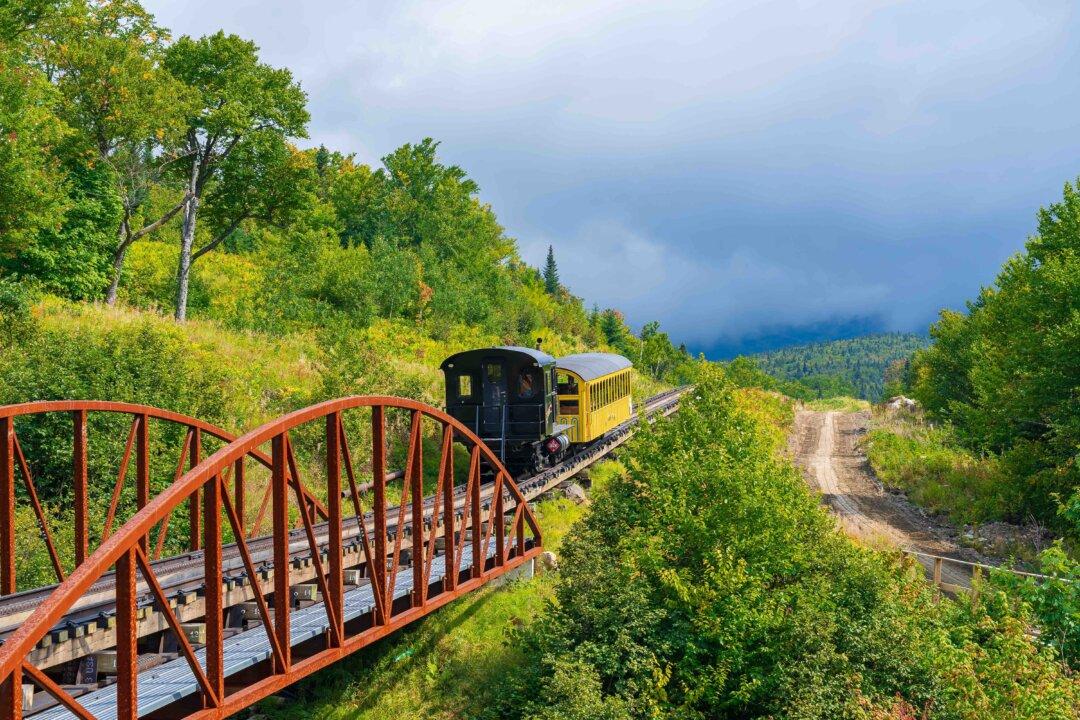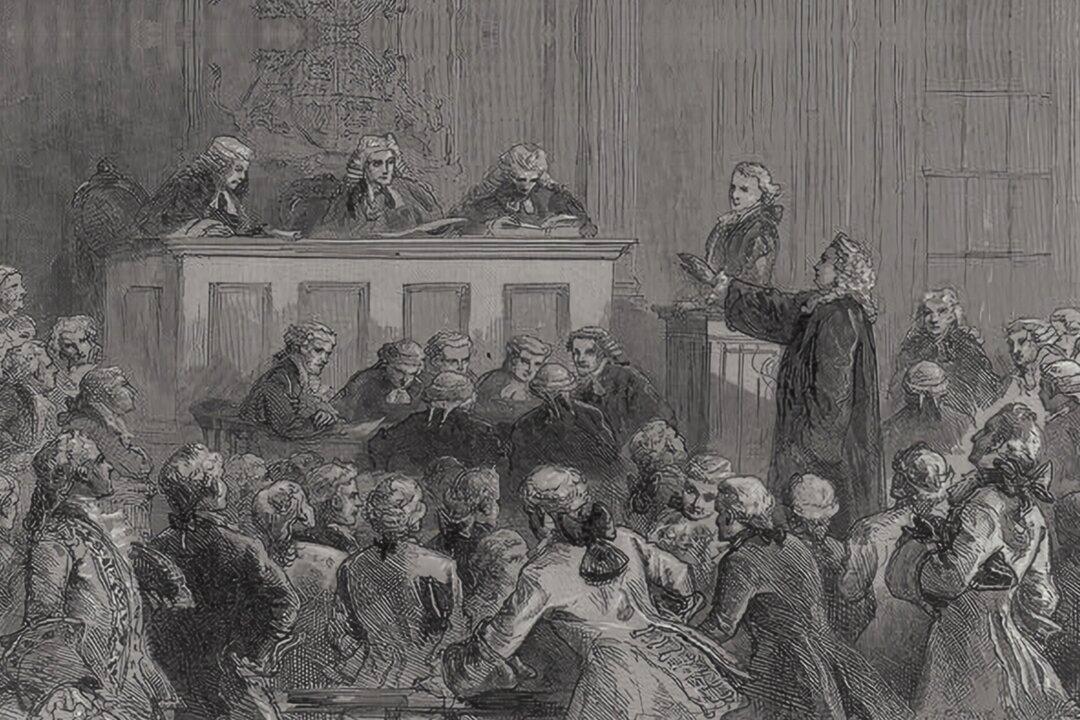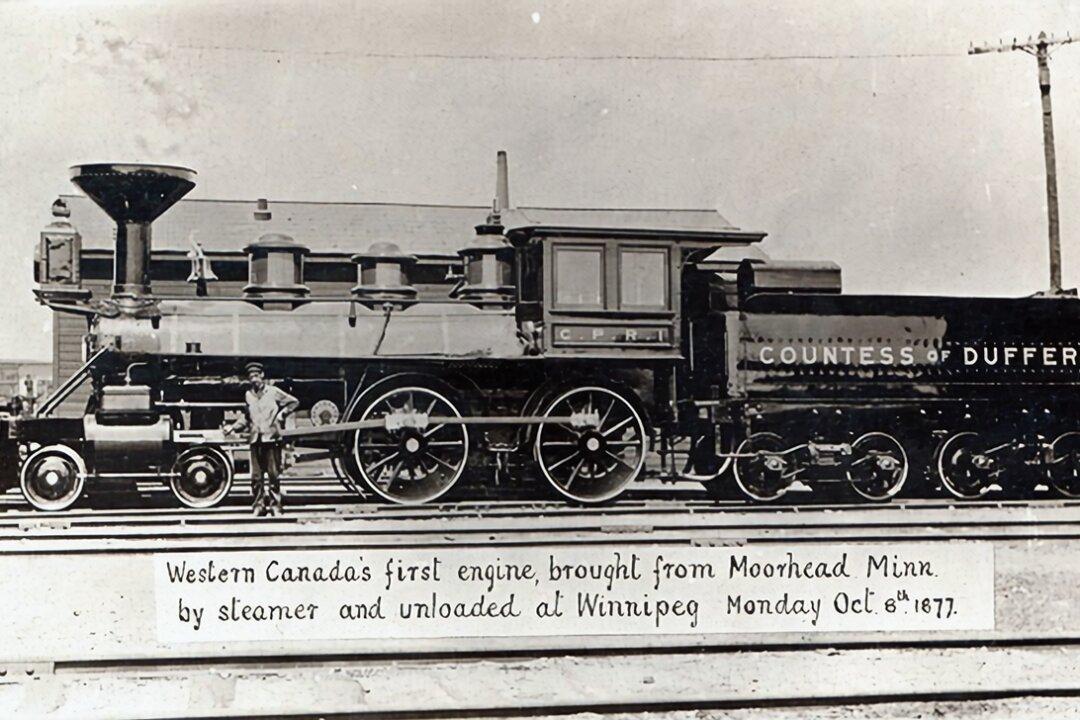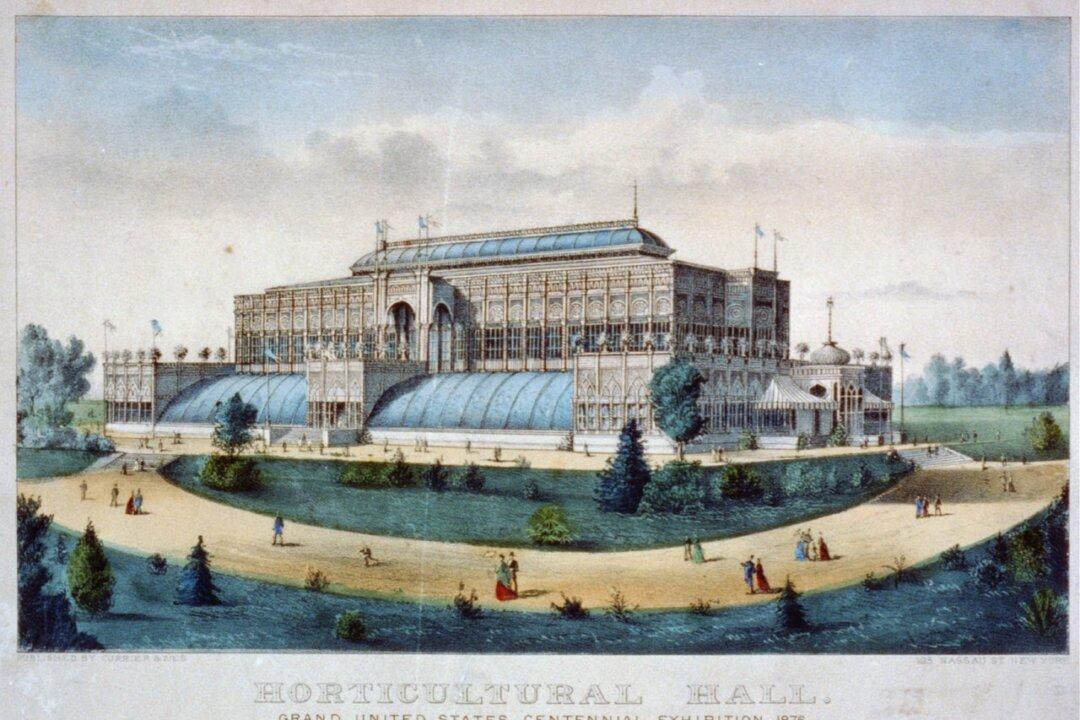On a day when the peak is shrouded by mist, passengers on the Mount Washington cog railway feel like they really could be on a railway to the heavens. Ascending to above the tree line and into the clouds, with each trip the railway invokes the imagination of its creator.
Sylvester Marsh, a 49-year-old entrepreneur, found himself and a friend temporarily lost on the tallest mountain in the Northeastern United States during a storm in 1852. At 6,288 feet, Mount Washington soars above New Hampshire’s White Mountains. Washington is just one of the “Northern Presidentials”—connected peaks bearing the names of early American presidents (the others: Adams, Jefferson, and Madison, plus Clay).





